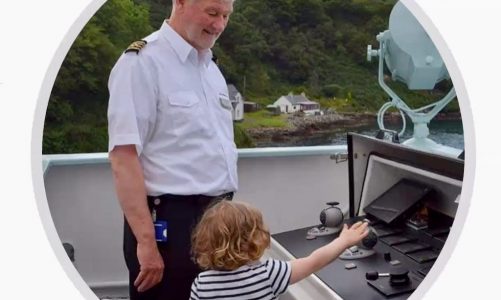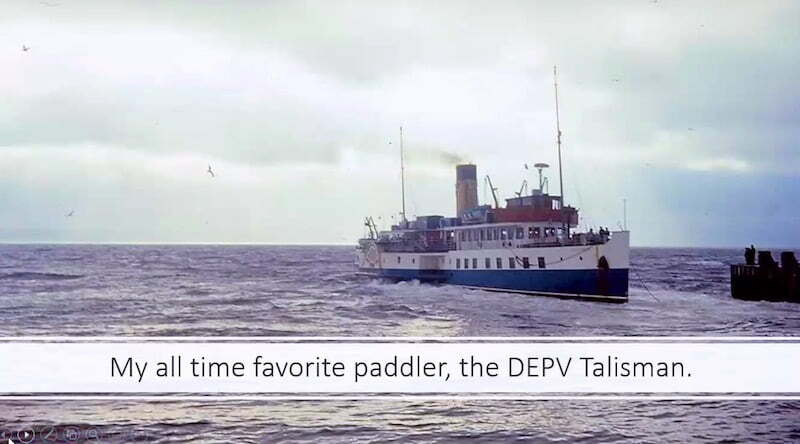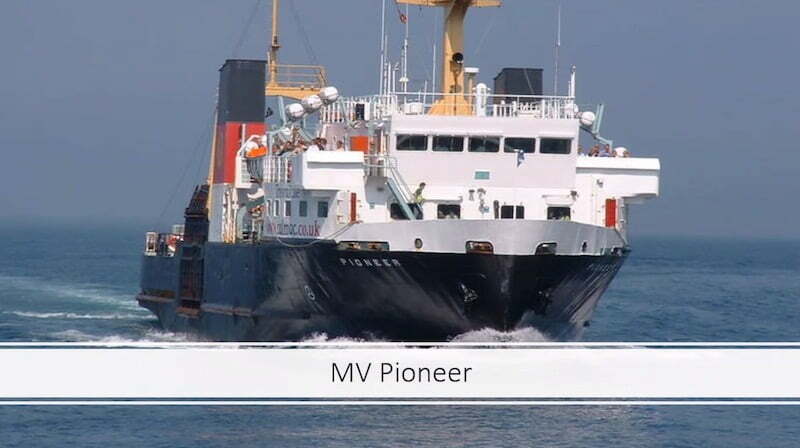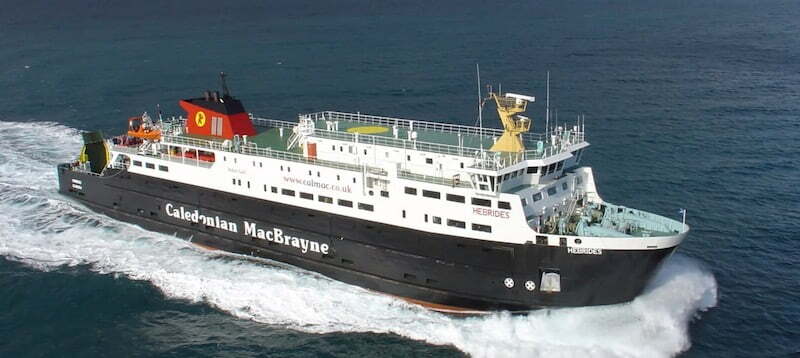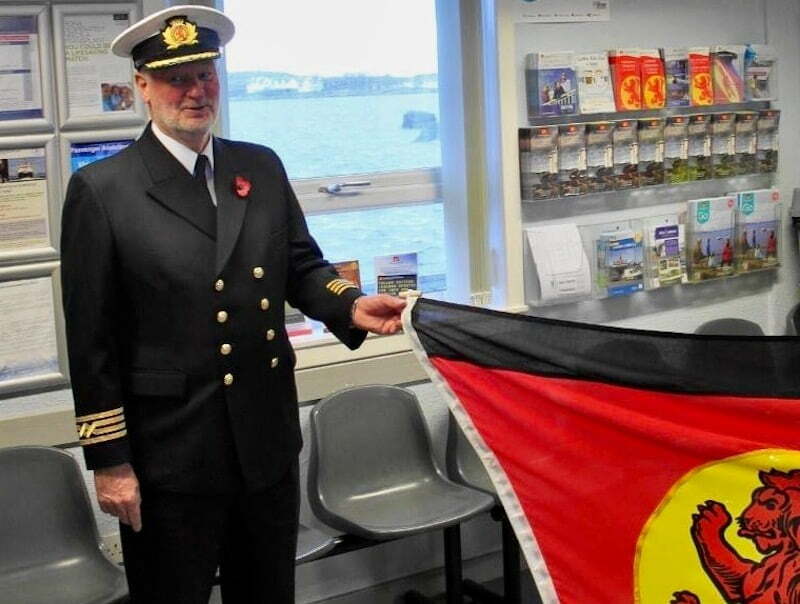One of the benefits of CRSC membership is being able to enjoy presentations given by retired (or current) captains of the CalMac fleet – or any other fleet – who have been persuaded to speak at one of our monthly meetings. On Wednesday 12 January, 138 members and friends (a record number for our Zoom meetings) were able to appreciate just that, when Captain Norman Martin gave us a heart-felt presentation on his long career. Stuart Craig gives us a personal account of the evening.
Born in Glasgow and now living in Oban, Captain Norman Martin began his career straight from school, with the Clan Line. The final charge of his career was Clansman, “which I can watch sail past my front window daily”. This explained the title of his talk — ‘From Clans to Clansman’. By the time of his retirement in 2015 he had commanded 17 different ships over 31 years, in a career that spanned 51 years.
Norman’s presentation started with a photo of him as a wee lad on the shoreline at Millport inspecting the propeller of puffer Saxon — a portent of his future career. He went on to show us his favourite paddle steamer, Talisman, before a detailed and aptly illustrated account of his years with the Clan Line – starting with the general cargo ship Clan Sutherland. There followed various types of vessel on which Norman sailed to such far-flung destinations as Australia, “right around Africa” and the Manchester Ship Canal!
Then, after a period with the Blue Star Line, Norman found himself one afternoon in MacBraynes’ office in Glasgow – whereupon he was assigned to Loch Seaforth at Mallaig the following day. Perhaps he wasn’t quite ready for a MacBraynes career, for as the ‘Seaforth’ set off she snapped off a nearby yacht’s mast with a mooring rope (not Norman’s fault) and her new recruit arrived in Stornoway covered in an allergic rash.
Over the next few months he served on Clansman (1964) – which he described as “difficult to steer” — and Iona (1970). Here your author learned something: the dummy funnel of Iona was full of safety gear!
Norman returned to deep-sea shipping in the mid 1970s but soon realised that, due to containerisation, the crewing situation in the deep sea industry was in decline, as “people were being shaken out and not taken in.”

In company with his sister (far left), Norman inspects the propeller of the Millport puffer Saxon during a childhood holiday — a sign of early maritime leanings
CalMac beckoned and Norman joined Bute in Hebridean waters. Once, when told that the ship was to be taken to Jura to pick up cattle, he thought it was a joke! He saw further employment on Arran, Glen Sannox, Pioneer (which he really liked) and Caledonia (which he really didn’t like). He also liked the much-altered Arran but noted that “alterations bring consequences” — a reference to the excess cavitation from which she suffered after the removal of superstructure from her stern.
In October 1979 Norman joined Claymore, “a ship that tested everyone’s stomach”, and was then given his first charge as skipper – on the ‘Island’ class vessel Bruernish. The following year he was back on Iona as mate and then, in the early 1980s, on Suilven.
But it was only a matter of time before he became captain of the bigger stuff. The first was Lochmor (well, fairly big) and then the full cornucopia of CalMac favourites followed: Pioneer, Claymore, Suilven, Lord of the Isles, Isle of Lewis.
When he was near the final destination of this enjoyably personal presentation, out sprang the best image of all – a photo of Hebridean Isles (the best-ever CalMac ship in the biased eyes of this author). Captain Martin described her as “the ugly duckling that I grew to love.” I completely understand his sentiments, apart from the ‘ugly duckling’ bit.
Norman explained that he favoured the ‘Heb Isles’ and her pseudo-sister Isle of Arran because they had outside bridge wings where he could take a breath of fresh air. I can attest to this as I recall having a conversation with Captain Martin to this effect many years ago as I stood behind the port wing of the ‘Heb Isles’ during a boisterous crossing of the Little Minch.
Norman finished his CalMac career on Clansman, which he described as “a proper ship”. He pointed out that this vessel and her sister Hebrides sport a ‘clansman’ on their bows — just like the Clan Line ships with which he started his career.
He finished with the considered observation that “it is a crew that brings a ship to life.” Captain Martin should know: he has given a huge part of his life to serving the communities of the west coast.
We certainly appreciated the time he gave CRSC for this presentation. His personal comments and little quips about the individual ships were fascinating – for we are all familiar with them, and have our own feelings about them.
Andy Anderson, in the chair, gave a brief vote of thanks and recorded the recent sad passing of Jim Buchanan, CRSC President in 1963-64.
Comments posted by CRSC members using the Chat button during the post-presentation discussion:
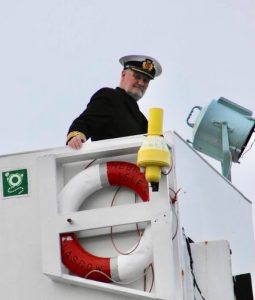 Donald Meek: ‘Excellent Captain Norman! What a splendid career. You have always carried your achievements lightly, and with great warmth, as we heard tonight’
Donald Meek: ‘Excellent Captain Norman! What a splendid career. You have always carried your achievements lightly, and with great warmth, as we heard tonight’
Captain John Gillies: ‘Excellent presentation, Norman. Great to hear the full story. I remember that first sailing of the Clansman with you. You have left very big shoes for us to fill’
Alan Chalmers: ‘Thanks Norman for a comprehensive and fascinating review of so many ships and companies’
Mark Nicolson: ‘What a fantastic voyage this was, Norman. Full speed all the way. Thank you for speaking so highly of the ‘Lewis’ LOL. Fantastic presentation! And you are absolutely spot-on — the officers and crews make the vessels!’
Robert Stanley: ‘It has been nice to join in on my first CRSC meeting. Thanks for an excellent presentation.’
NEXT MEETING: ‘Members Night’ — four invited speakers give their own presentations on Wednesday 9 February.
NORMAN MARTIN’S SHIPS: for the record, the full list of vessels he commanded (in order of appointment, but with much jumping back and forth) is Bruernish, Rhum, Lochmor, Caledonia, Pioneer, Glen Sannox, Claymore, Iona, Columba, Suilven, Hebridean Isles, Lord of the Isles, Isle of Mull, Isle of Arran, Isle of Lewis, Clansman, Hebrides.
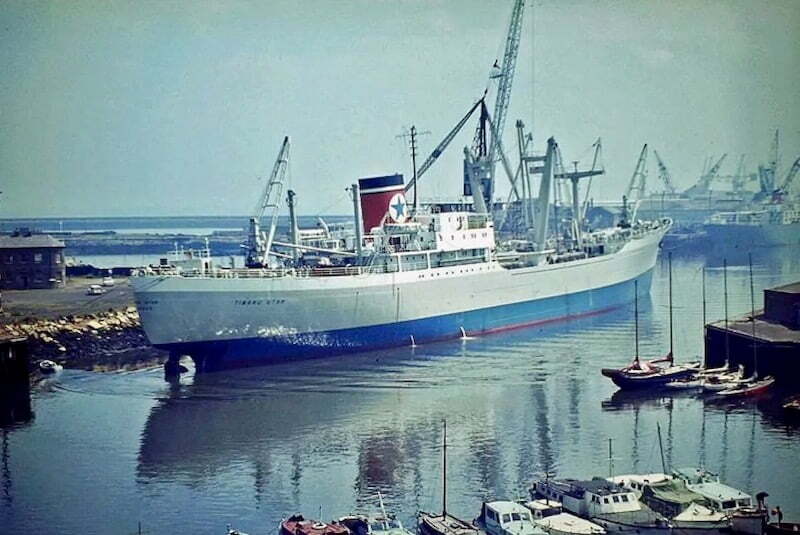
Timaru Star — one of the stylish Blue Star cargo ships on which Norman cut his teeth as a junior officer
Published on 13 January 2022














